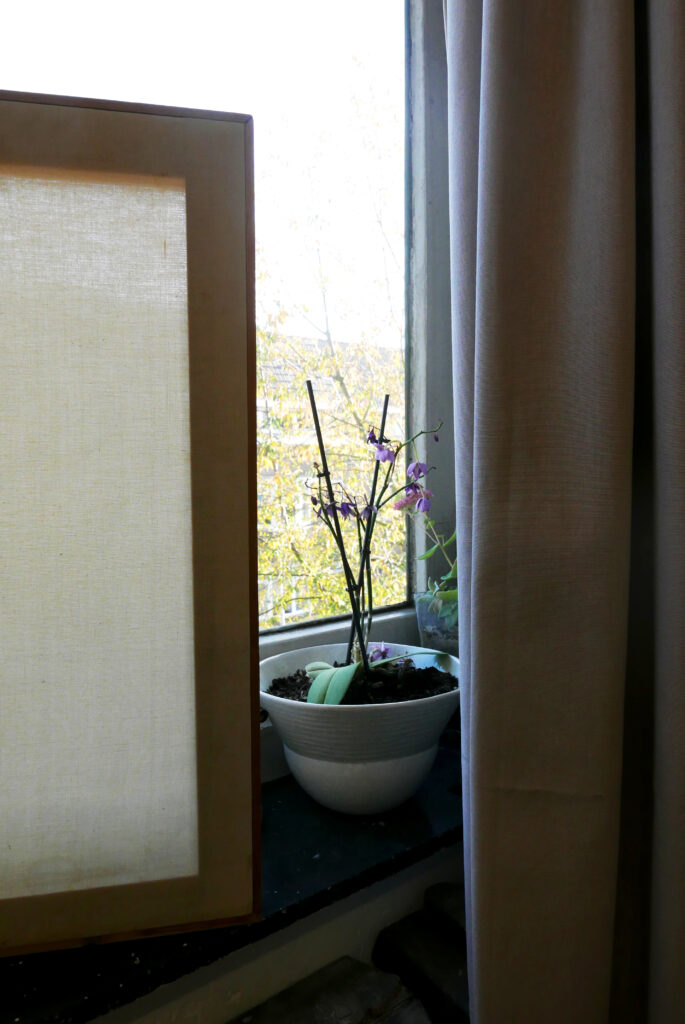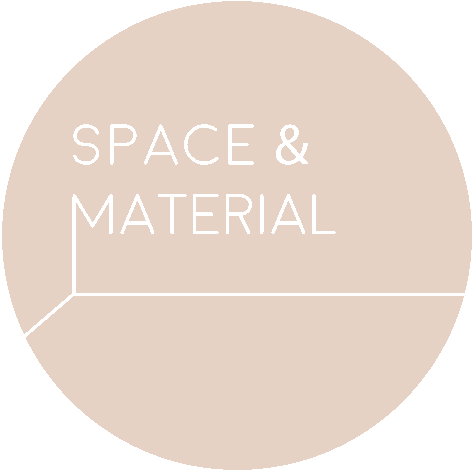OPEN DOOR CONVERSATION WITH CHRIS ROOVERS
“I’m busy with those forms, they are temples, Miss Corona. I come here every day and I’m busy building, I don’t want to be quick. I’m beating on them to make them strong, for days, because the more you beat them, the stronger they get.”
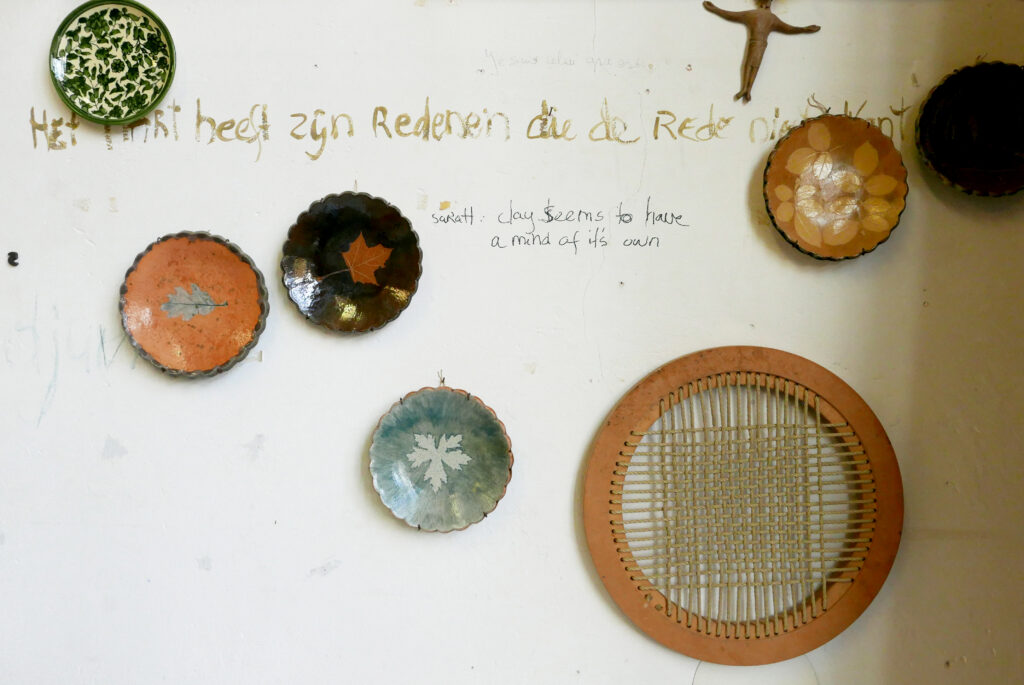
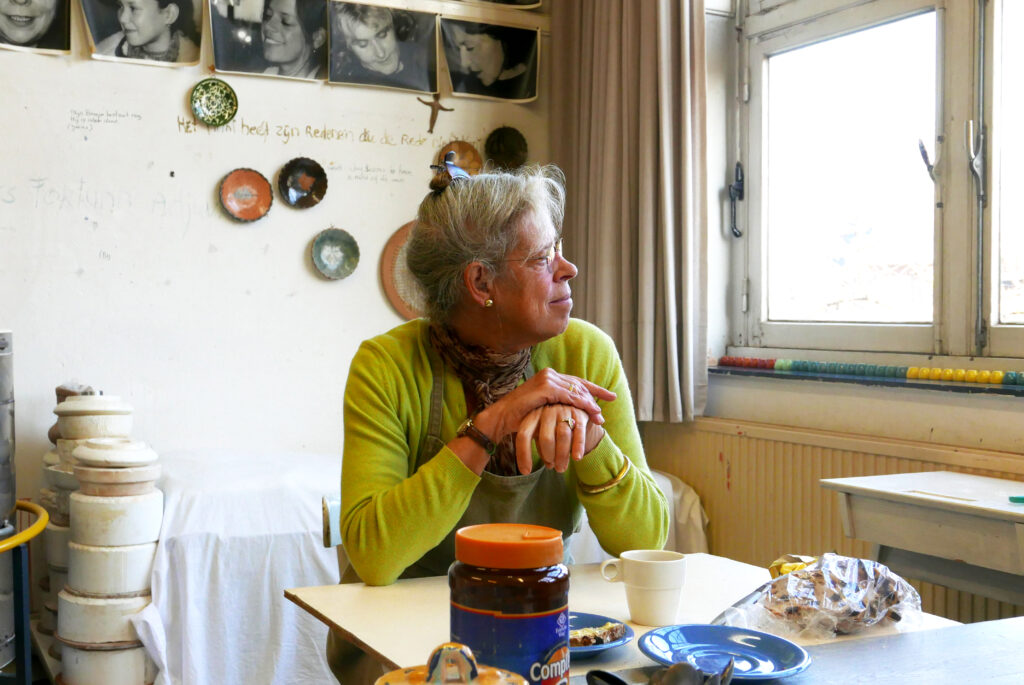
I wanted to be a stewardess or a farmer. A woman with a farm…but I was always good at handicraft so that’s why I studied handicraft, after my school.
I went to Academy in Amersfoort, the Academy for Beeldende Vorming that was called. In that time, the most important was that the students had to develop themselves in the material. Of course is was important to learn how to use the material, but also use the material as a form to express yourself. Because you became the teacher, you did the handicraft to teach in at school. The accent in that time laid on how to develop yourself in the material. I teach for a small time lettering writing, calligraphy. I never did it before, but they needed someone for a period of time and drawing lessons I gave. It was also not my thing…but, oh well.
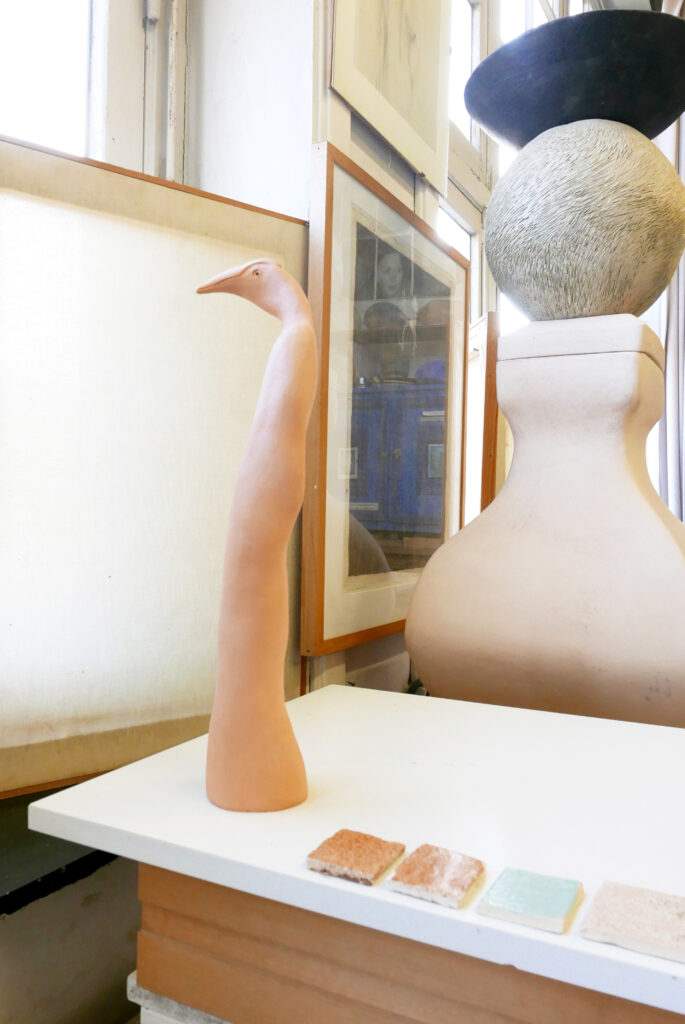
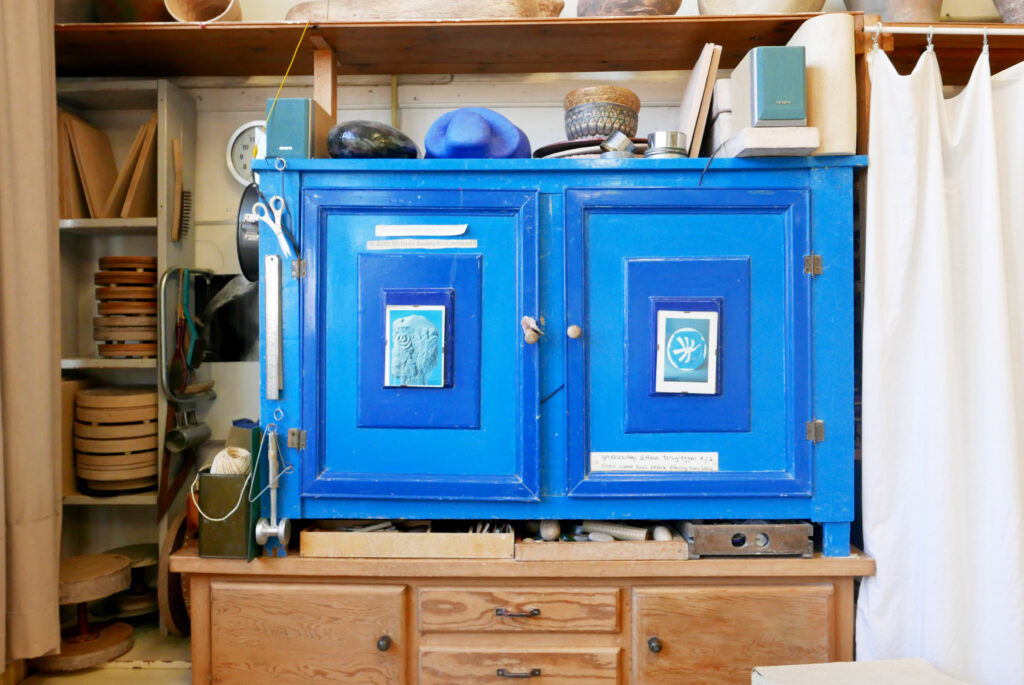
I was not at all so good at ceramics at the school, at the Academy time, but I think I didn’t like the teacher. Afterwards, after school, I started with painting. But then I had kids. I had one kid and then I thought: “What can you do at home?” I had to stay at home and then I thought I take clay and that was a good thing. And so I hoped that my daughters also would take a sort of work which they could do at home, develop something, what they could do at home and they did, they all did. The combination of kids, work, and home.
We lived in de Heeg, a suburb of Maastricht at that time, just a very normal, small house and we had three kids and my husband had this etching press, a big etching press in the living room..and the piano and the kiln for the pottery .I had several courses for pottery. But how is it possible we had so many things in the little room? I would not do that anymore, clay in my living room. So that’s how it started, we started making pots for flowers, for sugar, just simple things.
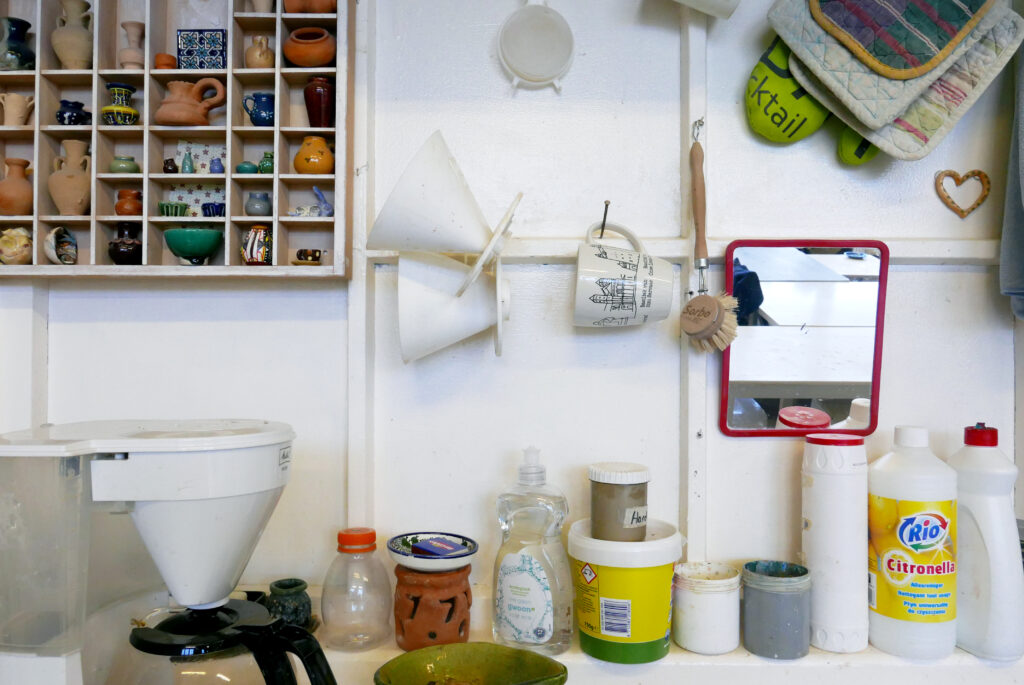
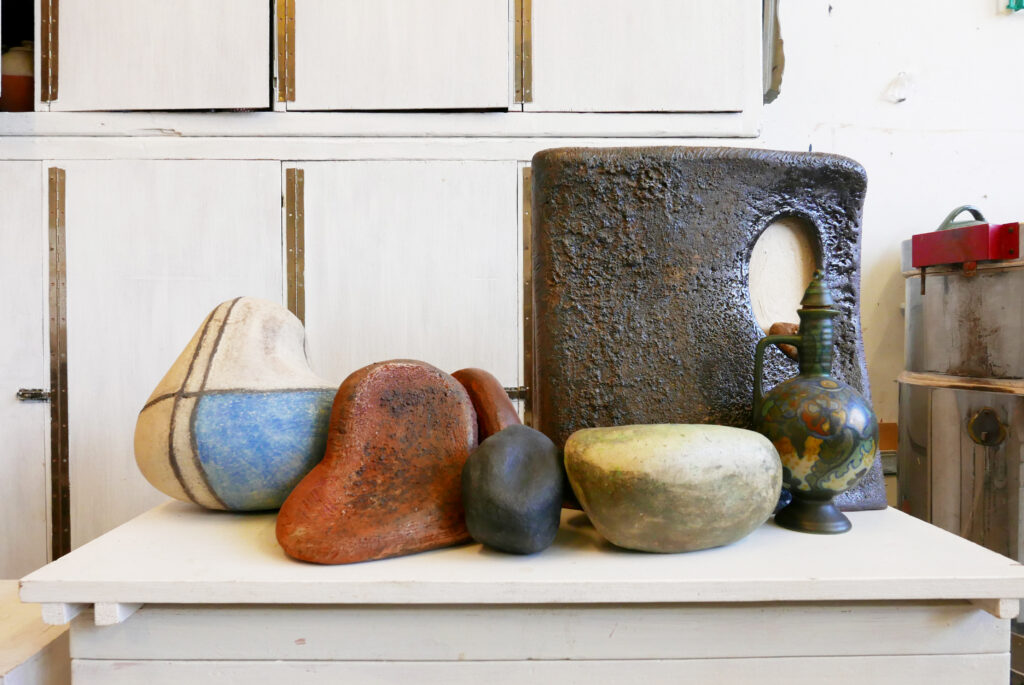
On her current project
I’m busy with those forms, they are temples, Miss Corona. I come here every day and I’m busy building, I don’t want to be quick. I’m beating on them to make them strong, for days, because the more you beat them, the stronger they get.
I’m busy with them. I’m making staircases here. I often create a masculine and female form, not because I want it,
but because it happens. How long will it take until it is ready? Yeah. You might think that it is impossible, that I beat, for hours. You have to beat very hard, very hard. Because I make it so strong. The more you beat it, the stronger it is. It’s difficult in the courses nowadays because the women, they all want to talk. They don’t dare to beat anymore.
…And I’m busy with it. I’m building on. Look (shows us a handle), a mystery thing, this is from my tea kettle and I don’t want to throw it away. So I used it, for this.
So yeah, perhaps I’m making something, but I have to…and you see this, Corona also means “crown”. I don’t know, I don’t know what’s happening and I don’t want to stop. And I have to see, shall I put it here, or shall I put it in the middle? But there are so many possibilities.
So in fact, what is the thing with me? I create the problem with clay and I have to solve it. So I start building, and stop in time. You cannot go on building because then the whole thing will collapse. After three periods of building you will have a sort of very exciting moment, because then you have an idea what form is coming to life. The form shows you the way, and from one (form) comes another.
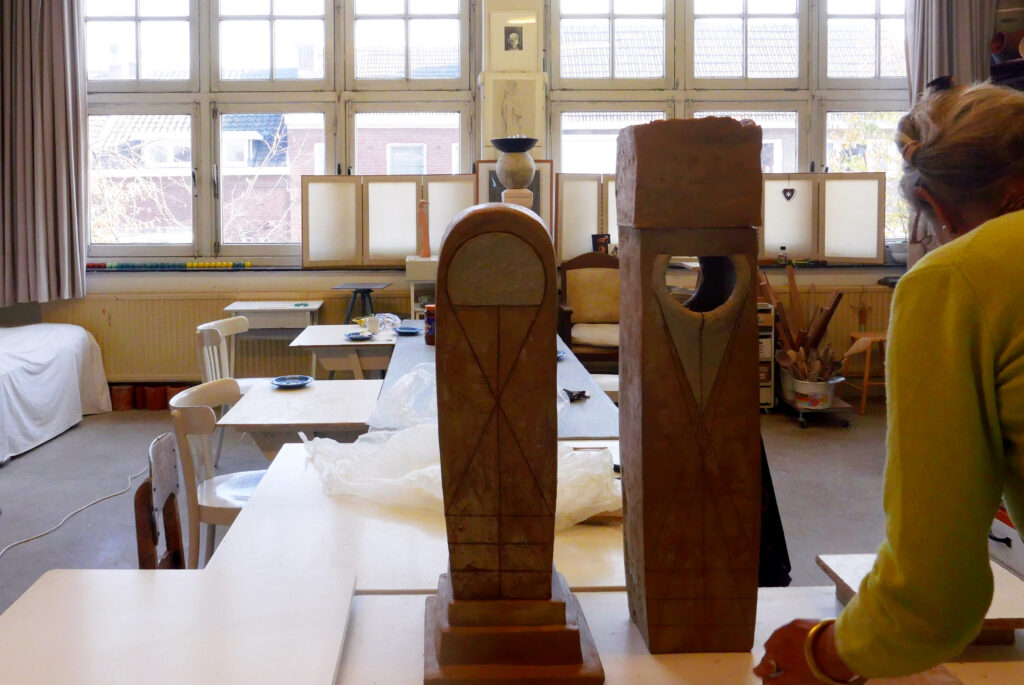
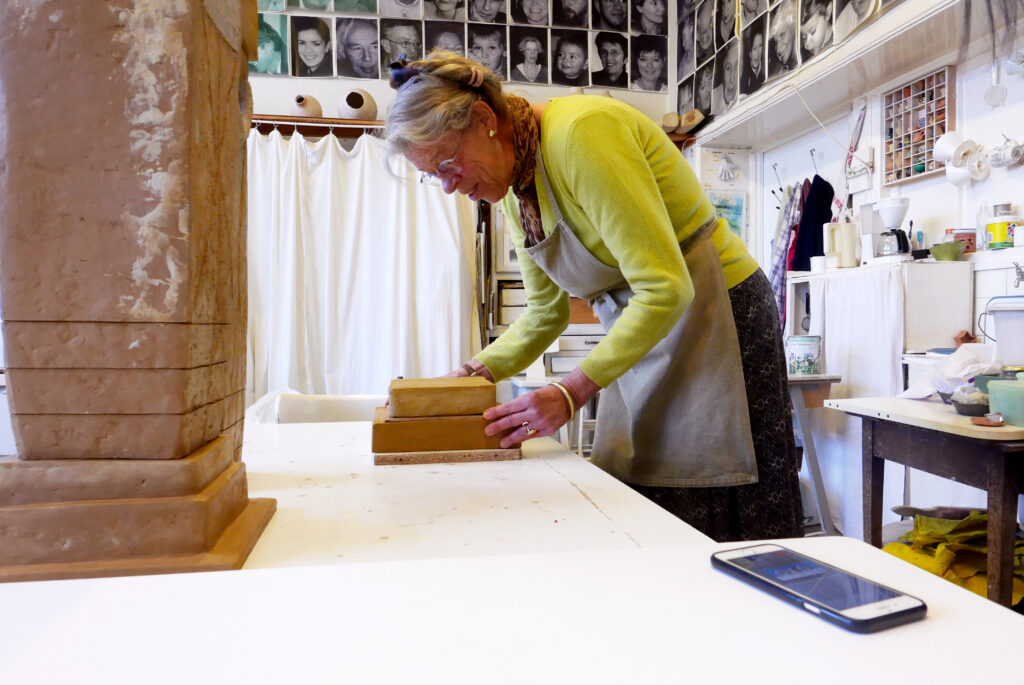
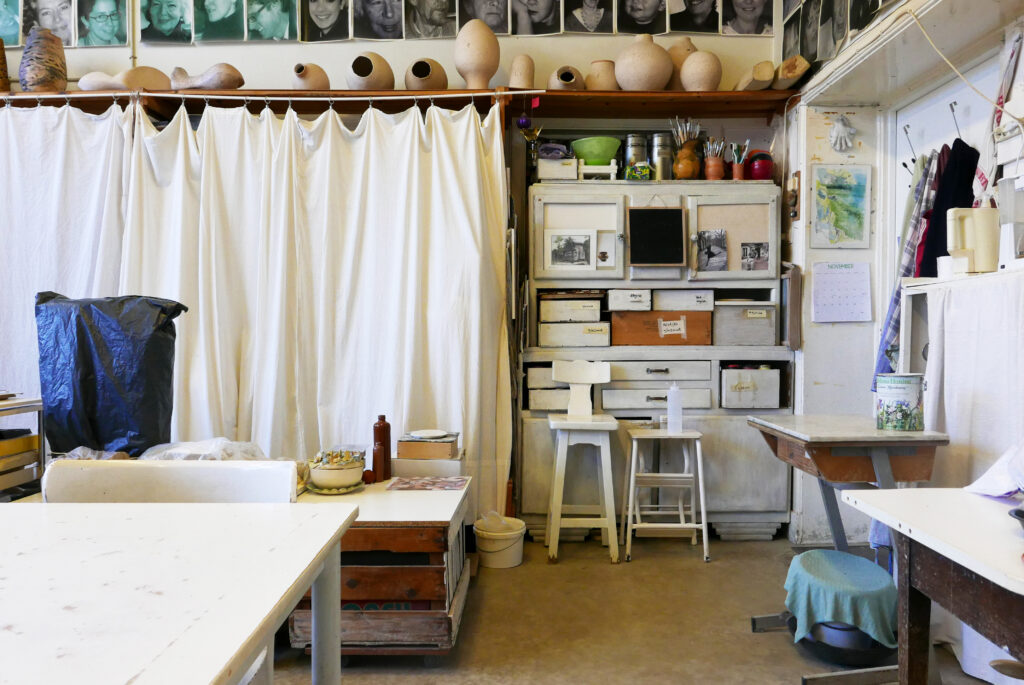
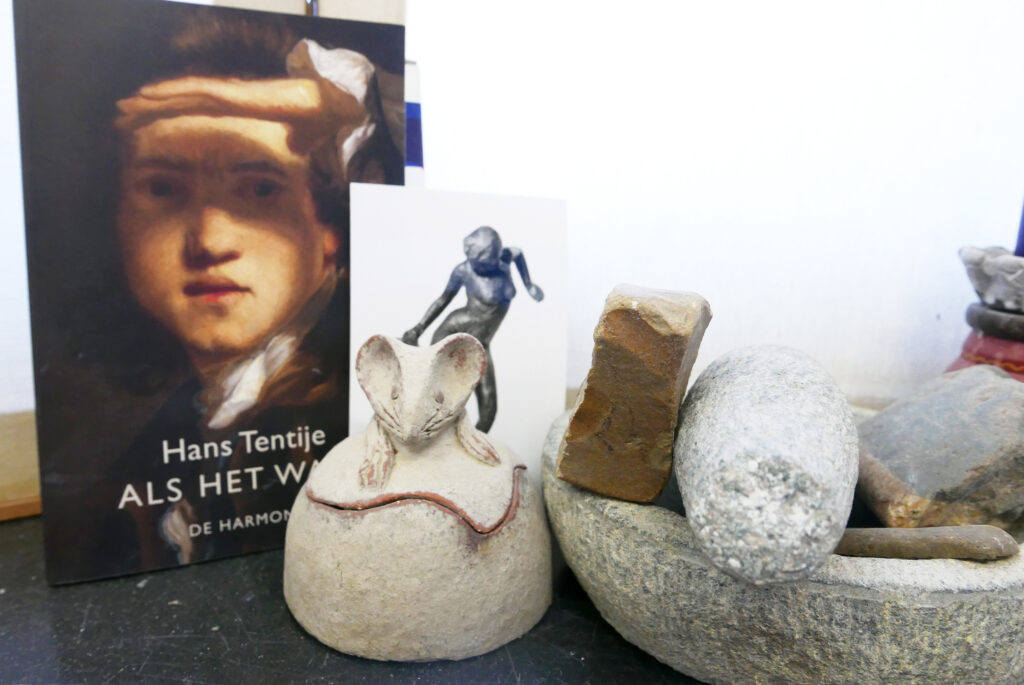
It’s unbelievable eh? It’s nearly…’84 and before I worked at home…it’s 35 years or something.
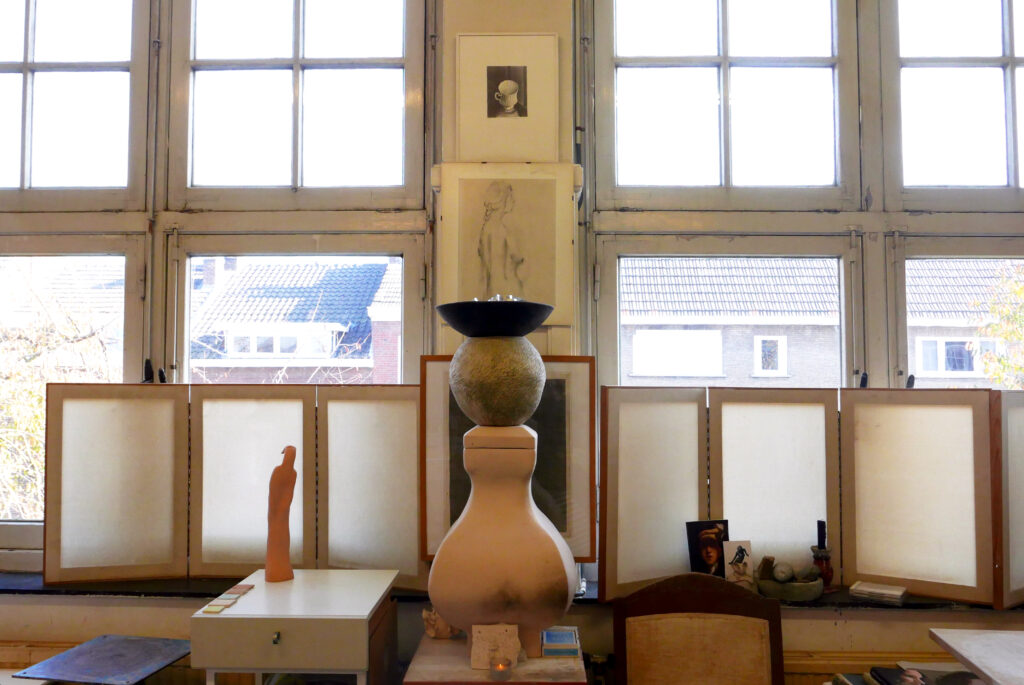
On making ceramics by hand
For a few years I went to a course, throwing (clay), at Kumulus. It was nice, but no, I prefer the hand-working. You don’t need nothing, you just need clay. The interesting thing is, working by hand, it is not equal. There is always a belly, a front, a back, you can see it. And that’s much more interesting for me. I pursued the throwing thing, it’s a real art, but my teacher who was a very good ceramic artist, he said: “ Well if you really want to learn it you’ll have to come daily, you have to practice daily for 5 years.” I don’t need it! And that’s what I want, also with my courses, just to keep it simple, just play. Just a stick, or a knife and you can make huge pots with it. I did.
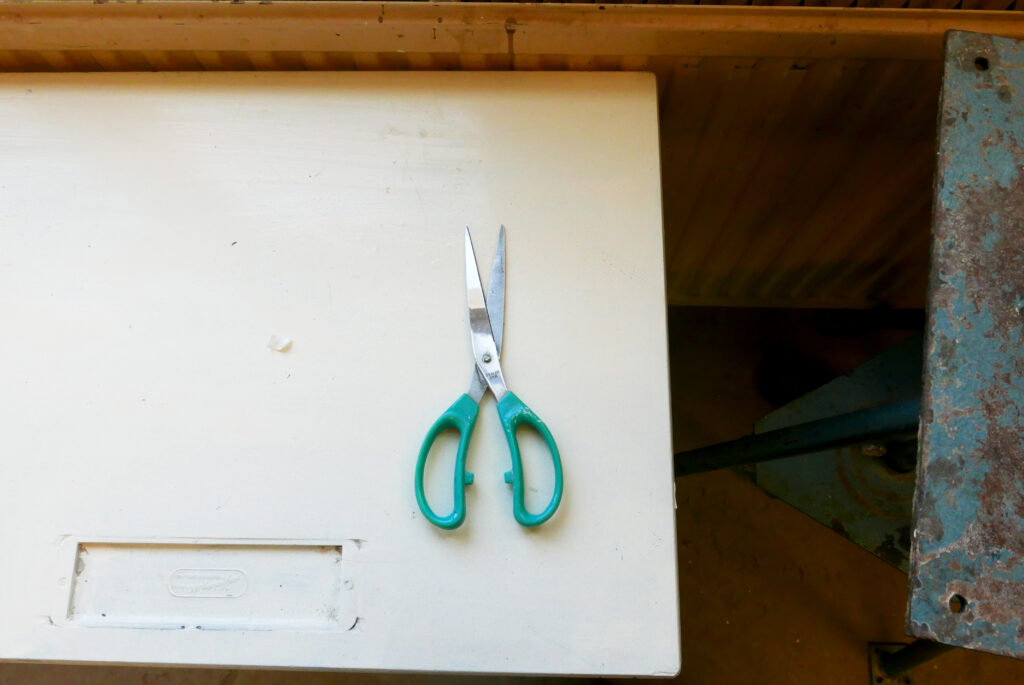
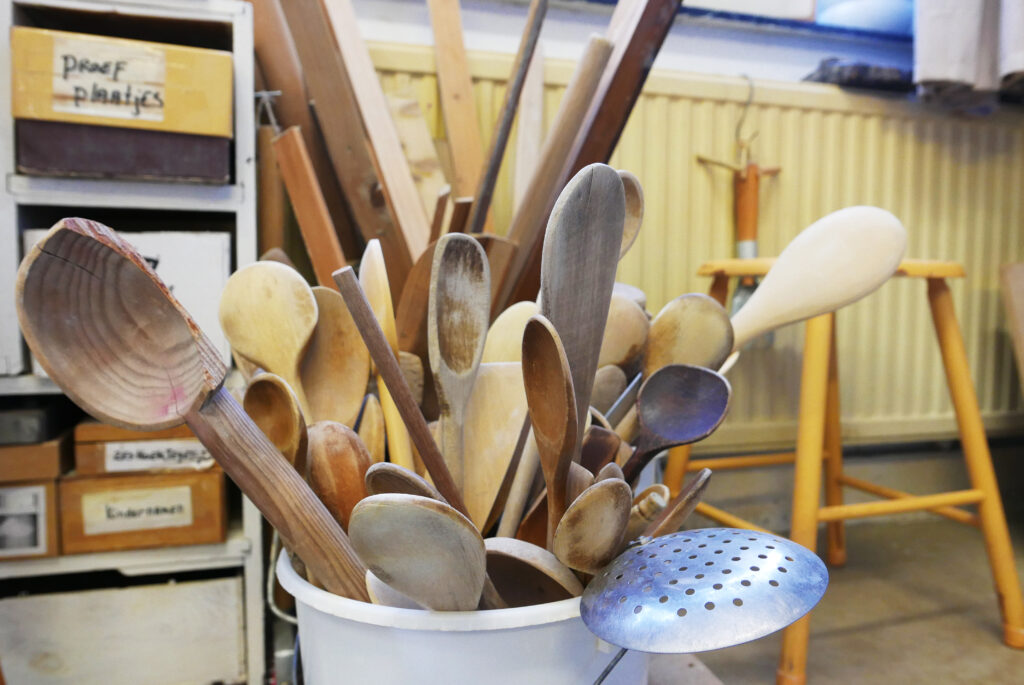
On her favorite part of her workspace
This place is special. If I come in, this room is beautiful, I mean also without my things. The light, the light is great and there is really a good spirit in here…perhaps I built it or perhaps I helped in building this good spirit, I’m not sure, but I think it’s just in the room.
The most precious thing in this room? It looks a bit like a question a child will ask, like ‘what is your favourite colour?” or something…I don’t have a favourite colour…yes, if I’m working with clay, I have a sort of knife I always use and I have… but…a favorite thing…I don’t know what to say.
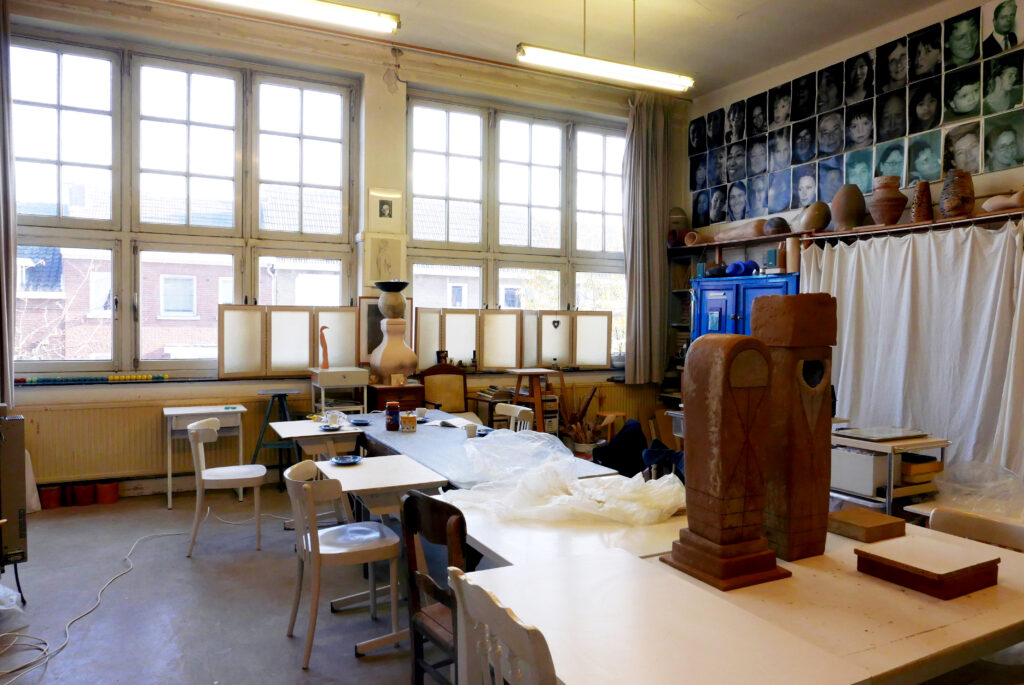
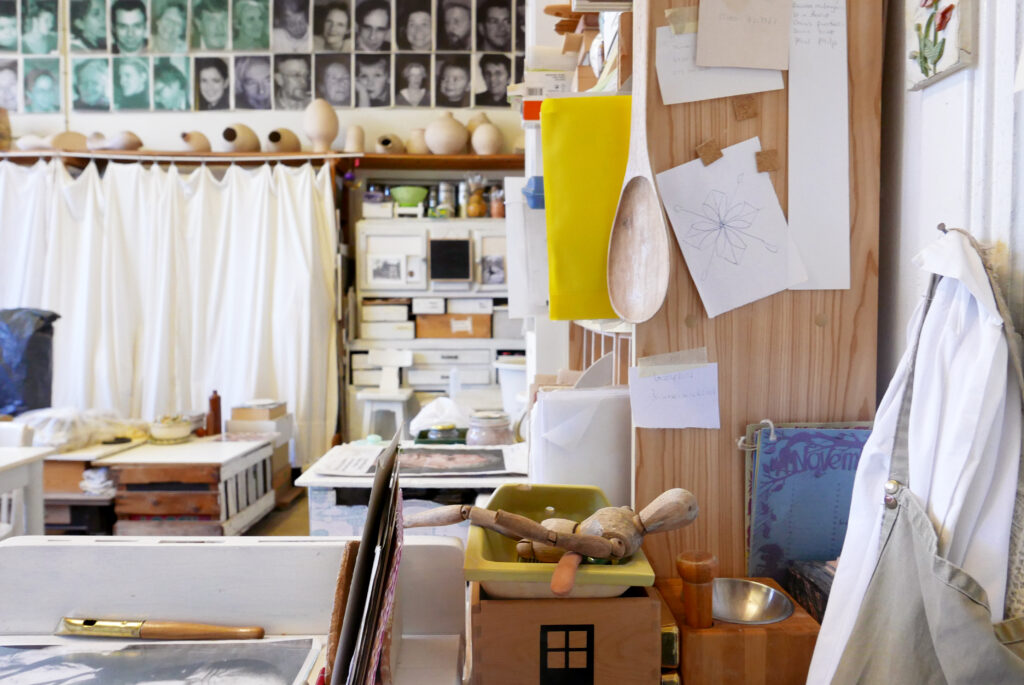
On solving problems
I had a very, very difficult time with one of my oldest friends. We have a really good friendship but had a very hard time for some reason and I thought: “How can I solve it?” I didn’t know, so I started this project, this was years ago. In fact they were very aggressive (the forms), I don’t know if you can see it? But I can place them on all sorts of directions, towards each other, I played with them. I painted them, and this is also a project from years. I don’t know if you see the aggression in them. They were ugly, they were sort of ugly forms.
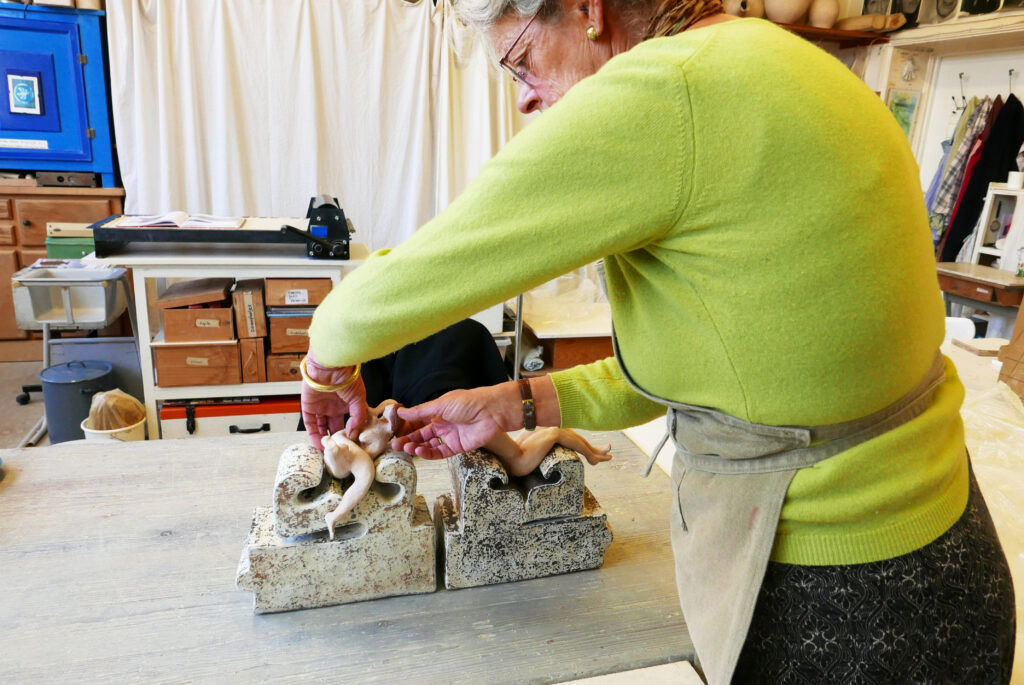
But I recently…I made, I did something. (Places clay figures atop of forms). What we have to do is listen to each other. But you must listen. Just be one big ear.
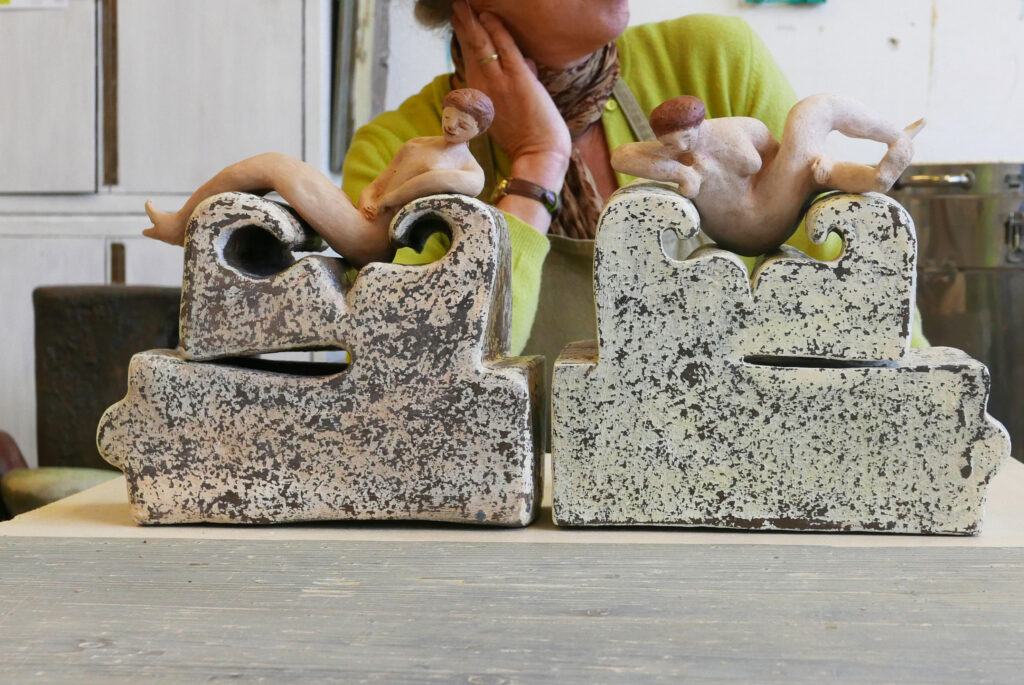
So I didn’t make it…I made it not because I wanted to make a very nice thing, I made it because I wanted to solve something. And in fact that is with all my work, I want to solve problems in working. I create problems and then I have to solve them, not only in my life, but also in the material.
The friendship is now changed, because she has a brain condition…( trails off)…and yes, we are very good together now. But she is now in assisted living, where she doesn’t belong because she is my age. But, well…yeah, she cannot live by herself at the moment. But our friendship is good. If it has something to do with this, the little women, I don’t know…I showed her pictures (of the work), yeah, she liked it.
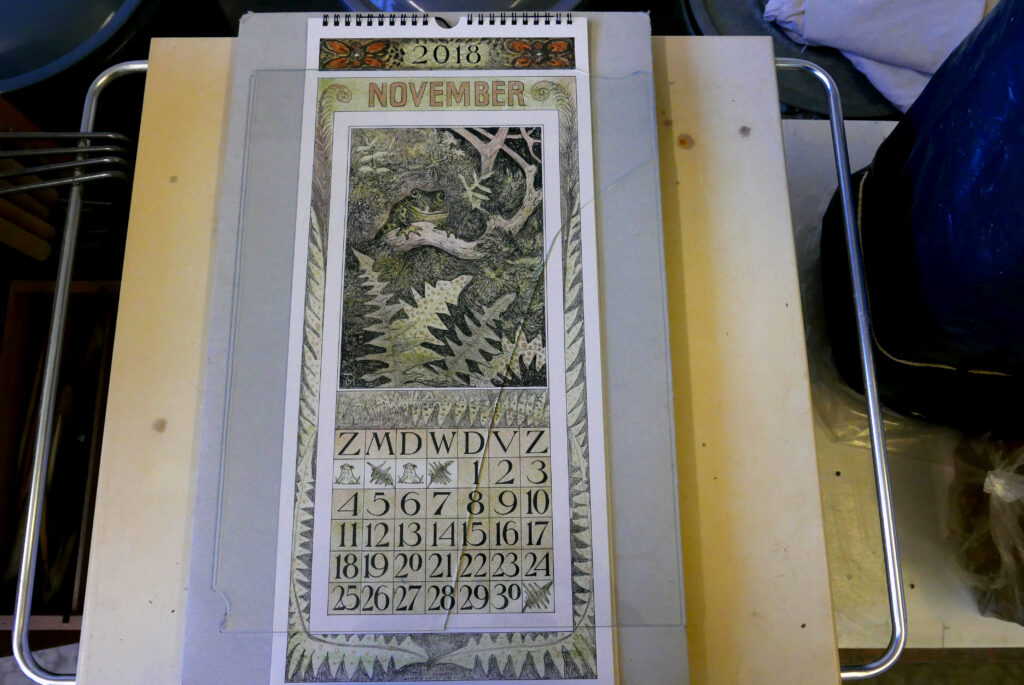
On inspiration
The (Corona) temples came to life because I was touched.. If you are touched by something, you really have too…So I was touched by the temples in the churchyard. Our churchyard has a lot of these, very dark temples, for the dead people. And I thought they look so heavy and terrible on
the grave, but I was touched by them. I thought, “They are fancy, Miss Corona temples”.
So that’s why I want to say, when you are touched by something, then do something with it. So I can always go on. I started with very simple forms, inspired by pottery from long long ago. Slowly
my interest expanded. The Romans, the Chinese, the Korean, the Greeks, and so on. All those periods, long periods in human history, they are brilliant. Very interesting, and how clever what they did. And how long ago. So I know I am a very simple little potter, but I love it.
On finding balance
It was always a very important thing for me, to work, to make things. When I came here, I had already three kids. My youngest daughter was then two years. I took her daily along with me to this workroom and went home when the school was out. When I was pregnant with my son, I did the same. With the pram, walking. And he played here. A lovely place for a child, I can tell.
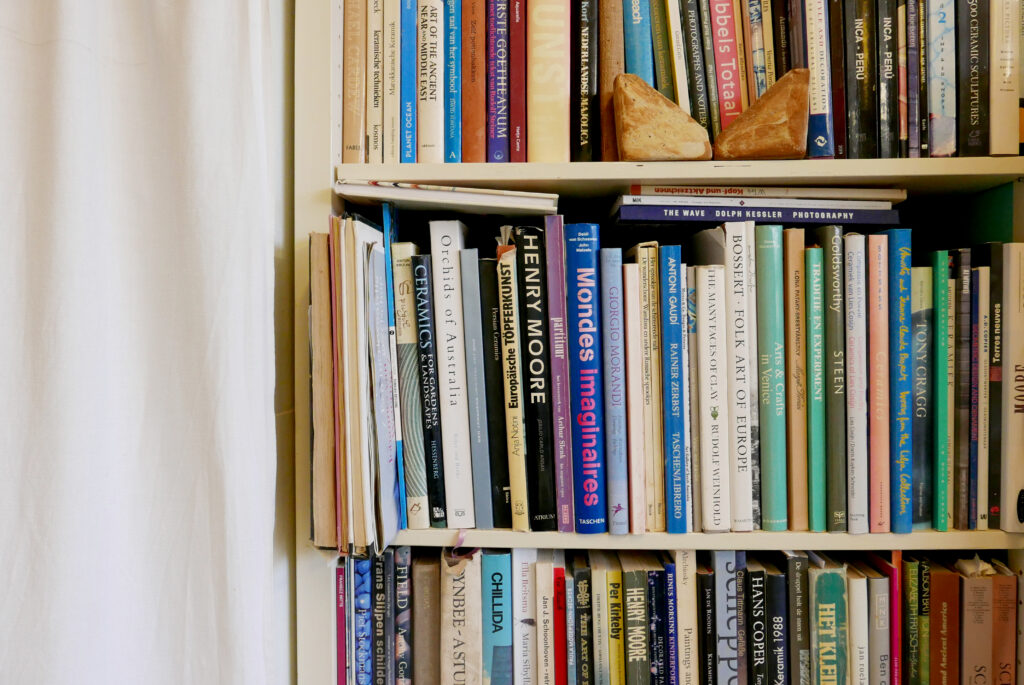
On being an artist
…That was not easy of course, because we always had money problems. It is of course difficult with this work to earn money. That is just difficult. So I often thought, I have to go. I have to find a job. But then I came here in this room and this room always gave me the feeling of ‘no, you have to stay here, this is your work.” That is really true. Because, also my husband was an artist, always those problems. But yeah, we survived, everything survived. Our love survived.
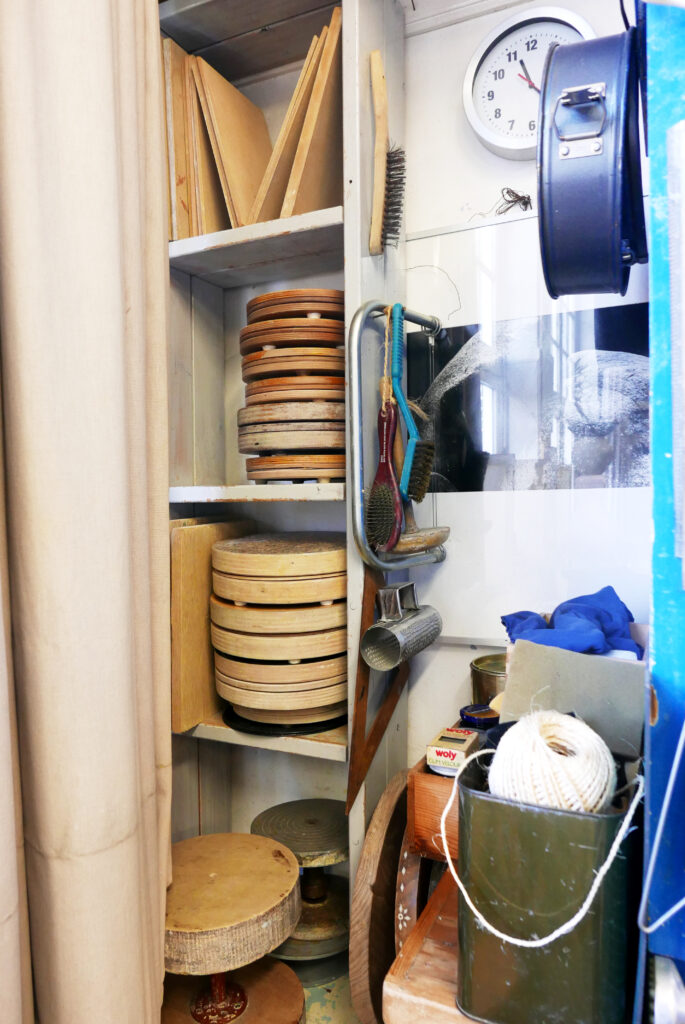
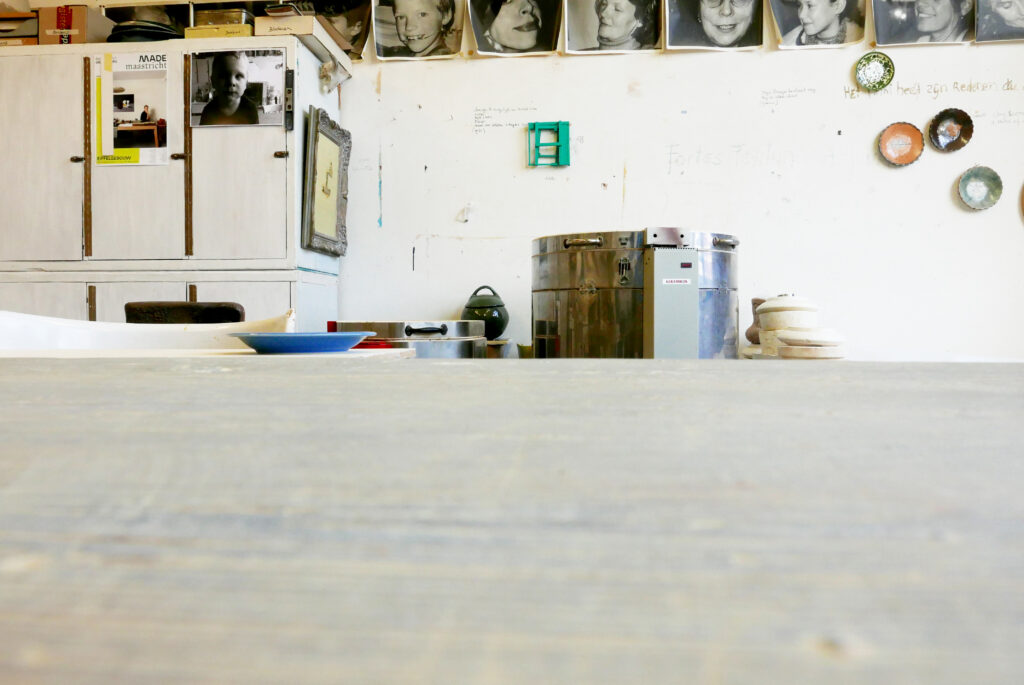
That’s the exciting thing, you are busy and then, ‘who is in it?’ Just looking, that’s the whole thing here, lots of waiting, and looking, and asking the object, ‘what does the object want?’ That is a great adventure.
